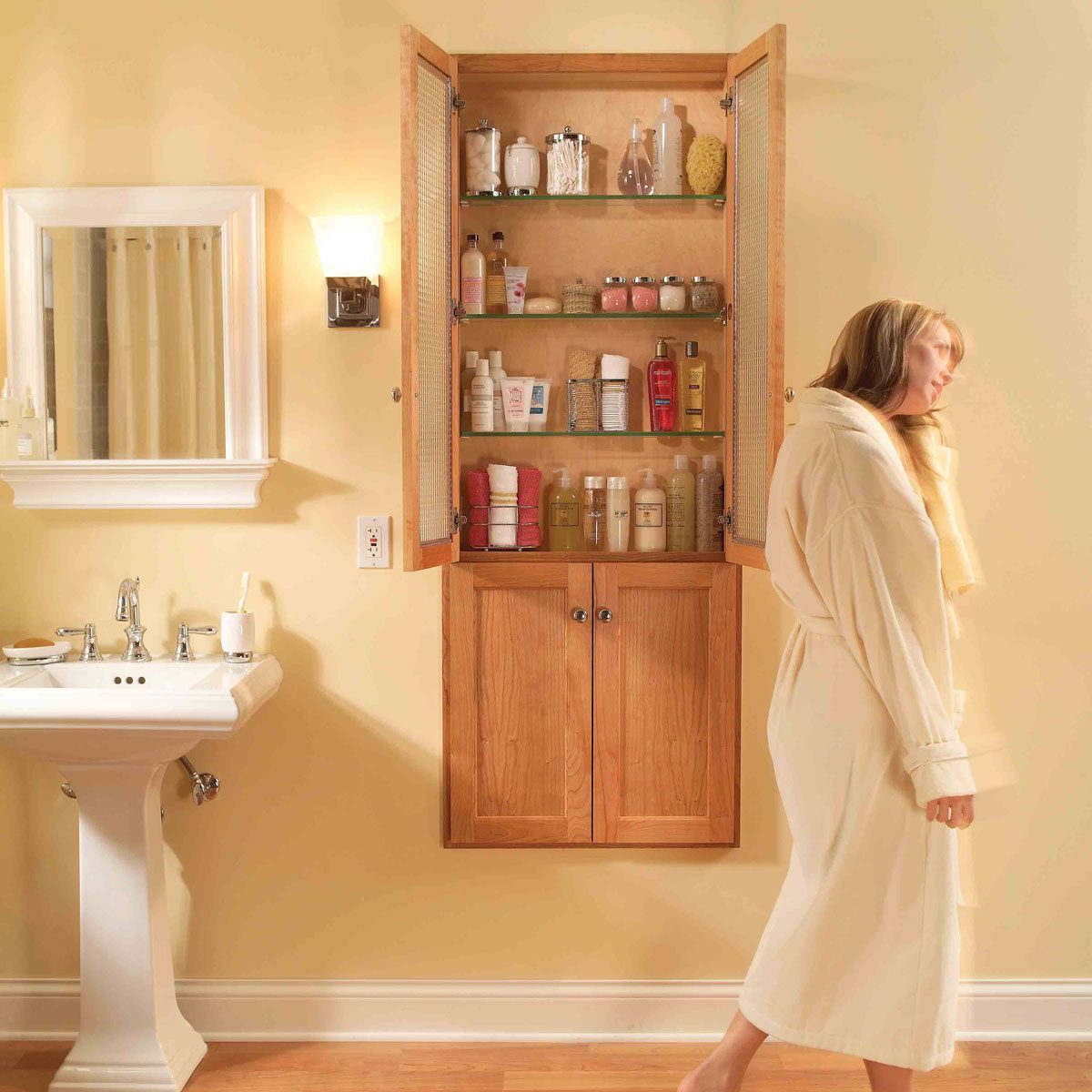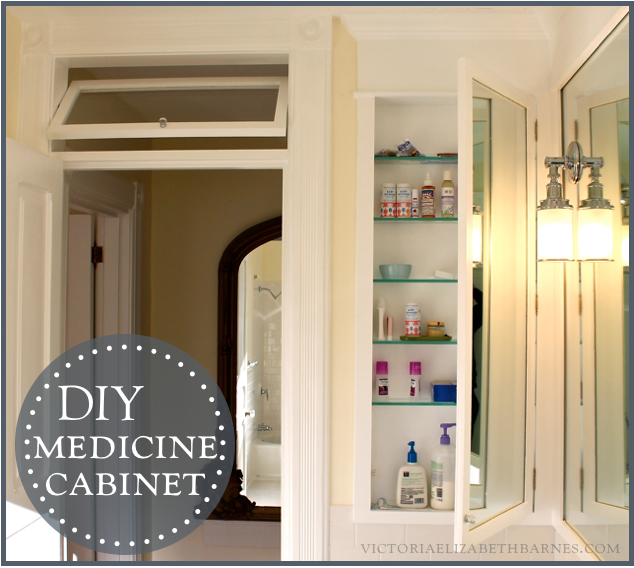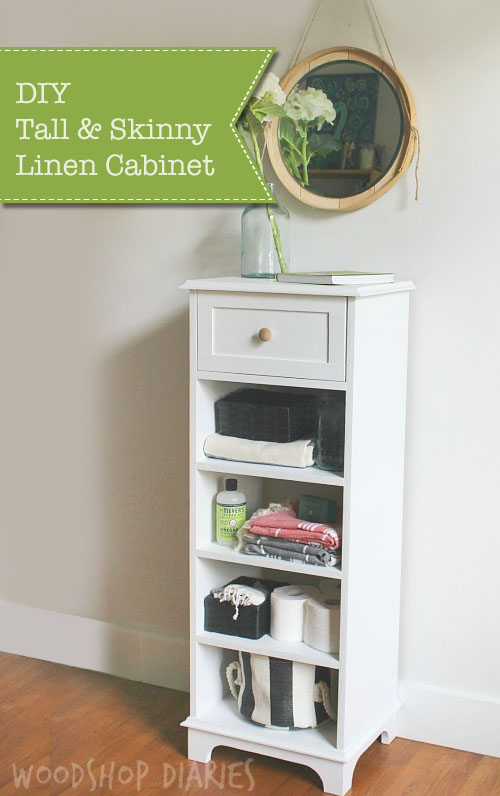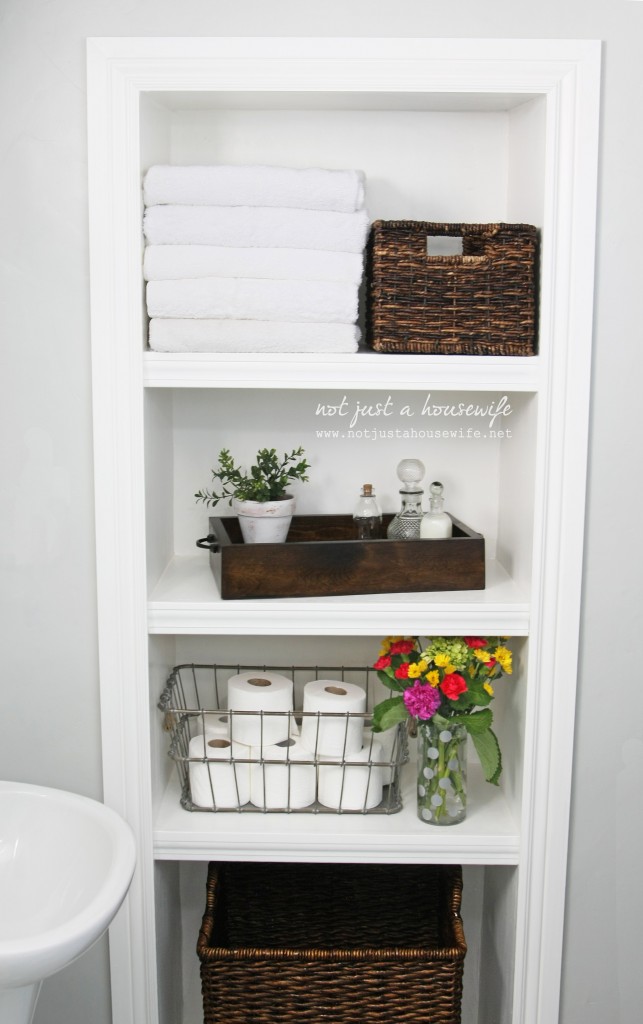Planning Your DIY Tall Bathroom Cabinet
Building a tall bathroom cabinet is a rewarding project that can add both style and functionality to your bathroom. Proper planning is essential to ensure that your DIY project runs smoothly and meets your needs. Here’s a comprehensive guide to help you through the planning phase.
- Assess Your Bathroom Space: Before diving into construction, measure your bathroom space carefully. Consider the dimensions of the area where you want to place the tall cabinet. Take note of the height, width, and depth constraints to ensure your cabinet fits well within the available space. Also, consider how the cabinet will impact traffic flow and accessibility in the bathroom.
- Define Your Storage Needs: Think about what you need to store in your tall bathroom cabinet. Will it hold towels, toiletries, cleaning supplies, or other items? Identifying your storage needs will help you design compartments and shelves that are appropriately sized and arranged. Make a list of the items you want to store and their dimensions to guide your design.
- Sketch a Design Plan: Create a detailed sketch of your cabinet design. Include the overall dimensions, the number of shelves or compartments, and any additional features such as drawers or doors. This sketch will serve as your blueprint and help you visualize the final product. Don’t forget to plan for ventilation and accessibility, especially if you’re storing items that need to be easily reachable.
- Set a Budget: Determine how much you’re willing to spend on the project. Consider costs for materials, tools, and any additional features you plan to include. Setting a budget will help you make informed decisions and avoid overspending. It’s also a good idea to include a contingency fund for any unexpected expenses.
- Choose a Style: Decide on the style of the cabinet that complements your bathroom decor. Whether you prefer a modern, minimalist look or a more traditional, ornate design, your cabinet should blend seamlessly with the rest of your bathroom. Consider the color, finish, and hardware that will best suit your chosen style.
- Gather Tools and Materials: Make a list of the tools and materials you’ll need for the project. Common tools include a saw, drill, measuring tape, and level. Materials typically include wood or MDF for the cabinet body, shelves, and doors. Be sure to gather everything you need before starting to avoid delays during the construction phase.

Choosing the Right Materials
Selecting the right materials for your DIY tall bathroom cabinet is crucial to ensure durability, functionality, and aesthetic appeal. Here’s a guide to help you choose the best materials for your project.
Wood vs. MDF Wood is a popular choice for cabinet construction due to its strength and natural beauty. Hardwood options like oak, maple, or cherry offer durability and a classic look, but they can be more expensive. MDF (medium-density fiberboard) is a cost-effective alternative that is easier to work with and provides a smooth surface for painting.
Consider Moisture Resistance Bathrooms are high-moisture environments, so it’s important to choose materials that can withstand humidity. If you opt for wood, make sure it is treated or sealed to resist moisture. MDF should be sealed properly to prevent swelling or warping. You might also consider moisture-resistant plywood or laminated surfaces for added durability.
Choosing Cabinet Hardware Select hardware that complements the style of your cabinet. This includes hinges, handles, and knobs. For a sleek, modern look, choose brushed nickel or chrome finishes. For a more traditional design, consider antique brass or oil-rubbed bronze. Ensure the hardware is durable and suited for bathroom conditions.
Finishes and Paints The finish you choose will affect the look and longevity of your cabinet. For a natural wood look, apply a stain and a protective topcoat. For painted finishes, use high-quality primer and paint that is resistant to moisture and easy to clean. Semi-gloss or gloss finishes are ideal for bathrooms as they are more durable and resistant to moisture.
Shelving Material The shelves inside your cabinet should be made from sturdy materials to support the weight of stored items. Consider using the same material as the cabinet body or opt for thicker MDF or plywood. Adjustable shelves can provide flexibility for changing storage needs.
Backing and Support The backing of your cabinet provides structural support and stability. Use a durable material like plywood or MDF for the back panel. Ensure that it is securely attached to prevent wobbling and ensure that the cabinet remains stable once installed.
Step-by-Step Construction Guide
Building your own tall bathroom cabinet can be a satisfying and practical project. Follow this step-by-step guide to ensure a successful construction process.
Prepare Your Workspace Start by setting up a clean, well-lit workspace where you can safely work on your cabinet. Ensure you have enough room to cut, assemble, and finish your cabinet. Lay out all your tools and materials for easy access.
Cut the Cabinet Components Using your design plan, cut the wood or MDF to the required dimensions for the cabinet sides, top, bottom, shelves, and back panel. Use a saw or circular saw for accurate cuts. Be sure to measure twice and cut once to avoid mistakes.
Assemble the Cabinet Frame Begin by assembling the cabinet frame. Attach the sides to the top and bottom panels using wood screws or a nail gun. Ensure that the frame is square by measuring diagonally from corner to corner. Use a level to ensure that the cabinet is plumb.
Install Shelves and Dividers Once the frame is assembled, install the shelves and any dividers according to your design plan. Use shelf supports or brackets to secure the shelves in place. If you’re adding adjustable shelves, drill holes at regular intervals to accommodate the shelf supports.
Attach the Back Panel Secure the back panel to the cabinet frame using nails or screws. This panel adds stability and prevents the cabinet from wobbling. Ensure that the panel is flush with the edges of the cabinet and that all screws are tightly fastened.
Install Doors and Hardware Attach the doors to the cabinet using hinges. Make sure the doors are aligned properly and open and close smoothly. Install handles or knobs on the doors, ensuring that they are placed at a comfortable height and spaced evenly.
Customizing Your Cabinet for Storage Needs
A DIY tall bathroom cabinet can be tailored to meet your specific storage needs. Here’s how to customize your cabinet to maximize functionality and organization.
Determine Storage Zones Divide your cabinet into zones based on the types of items you plan to store. For example, you might have a zone for towels, a zone for toiletries, and a zone for cleaning supplies. Use dividers or adjustable shelves to create distinct storage areas.
Add Adjustable Shelves Incorporate adjustable shelves to allow flexibility in your storage arrangements. This feature enables you to modify the height of each shelf to accommodate different-sized items. It’s particularly useful for adapting to changing storage needs over time.
Incorporate Drawers Consider adding drawers to your cabinet for smaller items or those you want to keep out of sight. Drawers can be installed at various heights within the cabinet and are ideal for organizing toiletries, cosmetics, or cleaning supplies.
Use Pull-Out Baskets Pull-out baskets can provide additional storage and make it easier to access items at the back of the cabinet. Install these baskets on sliding tracks for smooth operation. They are perfect for storing items like toilet paper, cleaning products, or extra towels.
Include a Built-In Towel Rack If space allows, integrate a built-in towel rack into the side of your cabinet. This feature provides a convenient place to hang towels, keeping them within reach while saving space. Ensure that the rack is positioned at a comfortable height for easy access.
Optimize for Vertical Space Take advantage of the vertical height of your cabinet by incorporating tall shelves or vertical dividers. This allows you to store items like tall bottles or cleaning supplies without wasting space. Ensure that taller items are easily accessible and not blocked by shorter shelves.
Finishing Touches: Painting and Hardware
Adding the finishing touches to your DIY tall bathroom cabinet will enhance its appearance and functionality. Here’s how to achieve a polished look with painting and hardware.
Prepare for Painting Before painting, sand the cabinet surfaces to ensure a smooth finish. Apply a primer to help the paint adhere better and provide a more even base. Fill any gaps or imperfections with wood filler and sand again once dry.
Choose the Right Paint Select a paint that is suitable for bathroom conditions. Look for paints that are moisture-resistant and easy to clean. Semi-gloss or gloss finishes are ideal as they are more durable and better at resisting water damage.
Apply the Paint Apply the paint using a brush or roller, starting with a coat of primer. Once the primer is dry, apply the paint in thin, even coats. Allow each coat to dry completely before applying the next. Multiple thin coats will provide a smoother finish than one thick coat.
Install Cabinet Hardware Attach the cabinet hardware, including handles, knobs, and hinges. Ensure that the hardware complements the style of your cabinet and is installed at the correct height and spacing. Use a template to ensure that all hardware is aligned properly.
Add a Protective Finish Consider applying a protective topcoat to the painted surfaces to enhance durability. A clear polyurethane or lacquer can help protect the paint from moisture, scratches, and daily wear. Apply the topcoat according to the manufacturer’s instructions.
Final Inspection Once the paint and hardware are installed, inspect your cabinet for any touch-ups or adjustments that may be needed. Ensure that all components are securely attached and that the cabinet opens and closes smoothly. Make any final adjustments to ensure a perfect finish.
Incorporating Style and Design
Customizing your tall bathroom cabinet to reflect your style can enhance the overall look of your bathroom. Here’s how to incorporate style and design elements into your cabinet.
Choose a Design Theme Select a design theme that complements the existing decor of your bathroom. Whether you prefer a modern, minimalist look or a traditional, rustic style, your cabinet should align with the overall theme. Consider the color scheme, materials, and design elements that will enhance the space.
Add Decorative Molding Incorporate decorative molding or trim to give your cabinet a more refined look. Crown molding at the top and baseboard trim at the bottom can add a touch of elegance and make the cabinet look more custom. Choose molding that complements the style of your bathroom.
Incorporate Glass Panels For a more sophisticated look, consider adding glass panels to the cabinet doors. Frosted or clear glass can add a touch of luxury and allow you to display decorative items or neatly organized toiletries. Ensure the glass panels are securely framed and easy to clean.
Use Stylish Hardware Select cabinet hardware that enhances the design of your cabinet. Handles and knobs come in various styles, finishes, and shapes. Choose hardware that complements the overall aesthetic of your bathroom, whether it’s sleek and modern or ornate and traditional.
Add Lighting Incorporate lighting into your cabinet design to highlight its features and add ambiance to your bathroom. LED strip lights or interior cabinet lights can illuminate the contents and create a warm, inviting glow. Ensure that the lighting is installed safely and complements the overall design.
Incorporate Personal Touches Add personal touches to make your cabinet uniquely yours. Consider custom paint colors, unique hardware, or decorative elements that reflect your style. These small details can make a big difference in how your cabinet fits into your bathroom decor.
Tips for Installing Your Tall Bathroom Cabinet
Proper installation is key to ensuring that your DIY tall bathroom cabinet functions correctly and looks great. Follow these tips for a successful installation process.
Prepare the Installation Area Before installing your cabinet, ensure that the installation area is clean and free of obstacles. Measure the space to confirm that the cabinet will fit properly. Remove any existing fixtures or obstructions that might interfere with the installation.
Secure the Cabinet to the Wall For stability and safety, secure the cabinet to the wall using wall anchors or screws. Locate the wall studs using a stud finder and attach the cabinet to these studs for maximum support. Use a level to ensure that the cabinet is installed straight and adjust as needed.
Adjust the Cabinet Doors Once the cabinet is mounted, adjust the doors for proper alignment and smooth operation. Most cabinet hinges have adjustment screws that allow you to fine-tune the door position. Ensure that the doors open and close easily and are evenly spaced.
Install the Cabinet Hardware Attach the handles or knobs to the cabinet doors and drawers. Use a template to ensure that the hardware is installed at the correct height and spacing. Check that all hardware is securely fastened and aligns properly with the cabinet design.
Seal and Caulk Seal any gaps between the cabinet and the wall with caulk to prevent moisture from getting behind the cabinet. This will also give the installation a polished, finished look. Use a caulking gun to apply a bead of caulk and smooth it with a damp finger or tool.
Final Inspection and Cleanup Perform a final inspection of the installed cabinet to ensure everything is properly aligned and functioning. Check that all shelves and drawers are securely in place and that the cabinet is stable. Clean up any dust or debris from the installation process and make any necessary adjustments.
DIY bath remodel – DIY medicine cabinet.
Building a Simple Bathroom Cabinet
Making a Tall Storage Cabinet
Reader Project: Reincarnated Cabinet Tall bathroom storage
How to Build a Tall u0026 Skinny Storage Cabinet – Pretty Handy Girl
Between the Studs Bathroom Storage Ideas for small spaces
Related Posts:
- Best Finish For Bathroom Cabinets
- Bathroom Cabinet For Plunger
- West Elm Bathroom Cabinet
- Argos Bathroom Cabinets Storage Units
- Tall Bathroom Cabinet With Mirror Door
- Small Black Bathroom Cabinet
- Double Swivel Mirror Door Bathroom Cabinet
- Grey Gloss Bathroom Cabinet
- Zanex Bathroom Cabinets
- Modern Bathroom Cabinet Ideas











